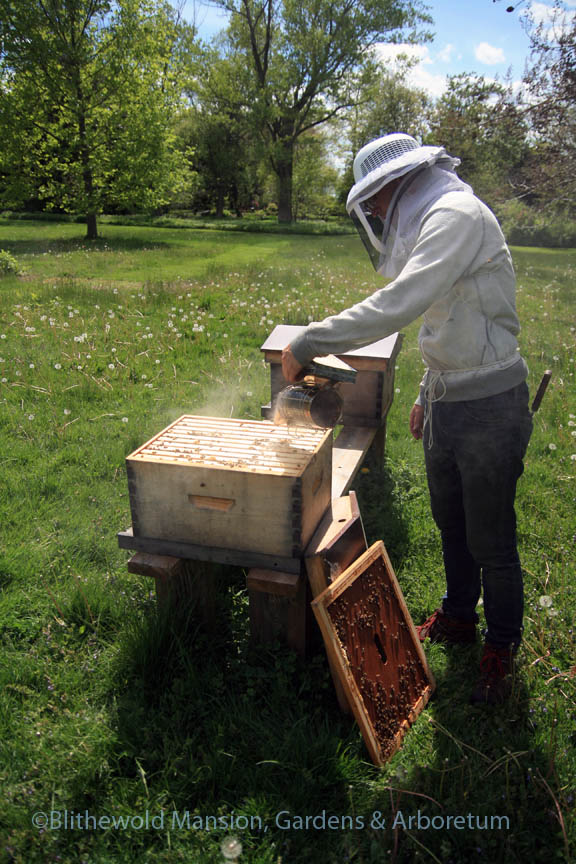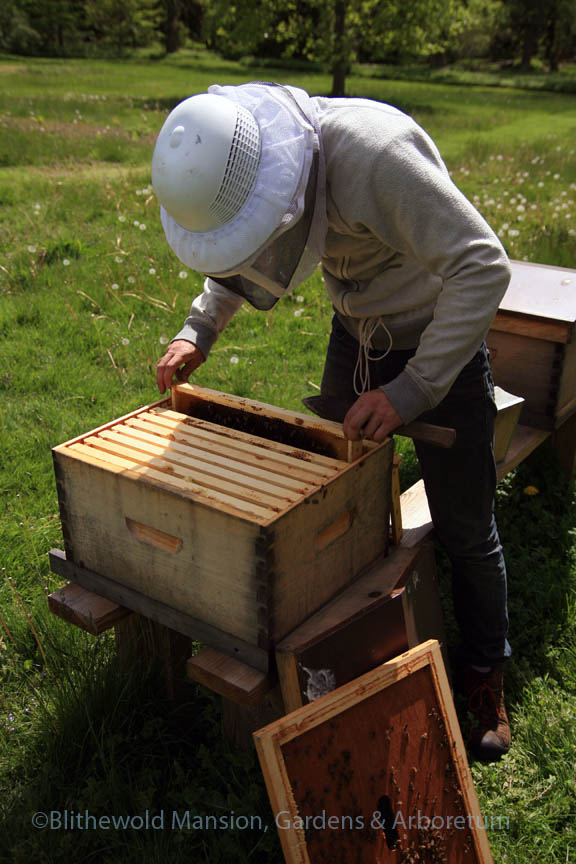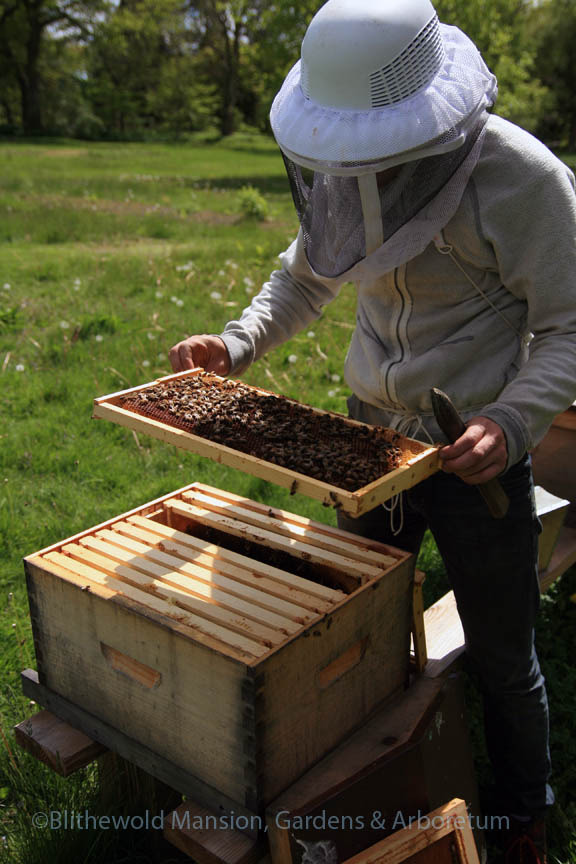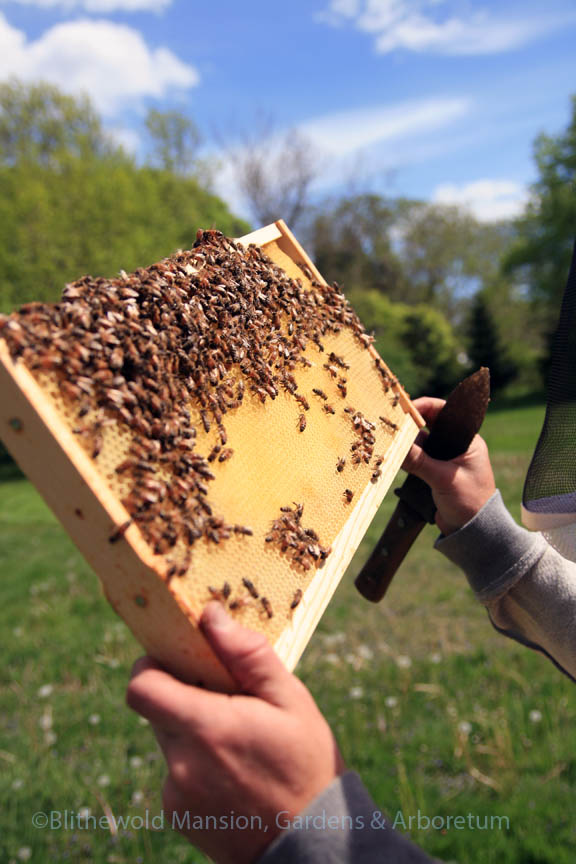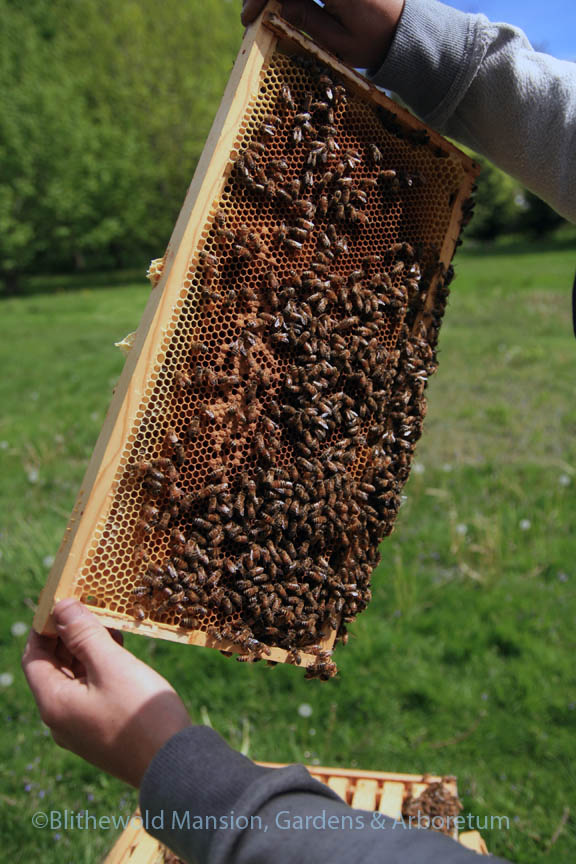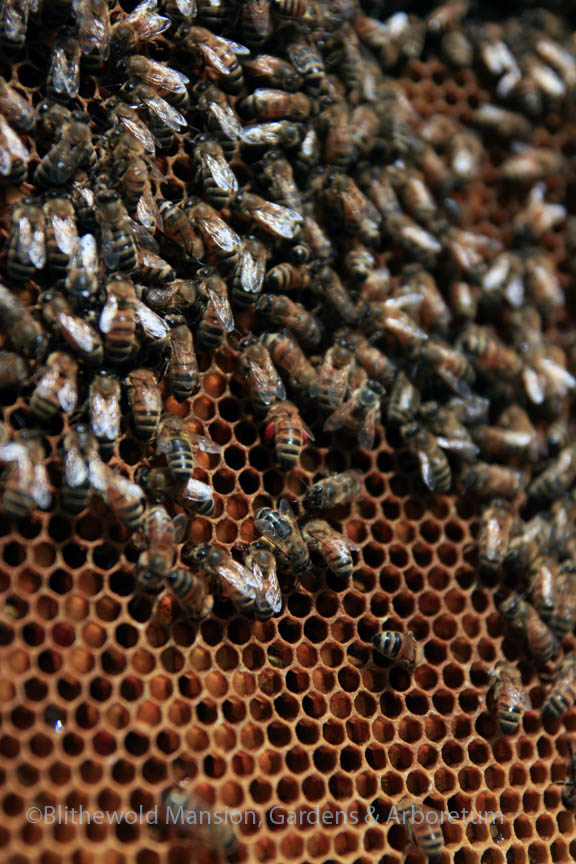Free bees
This past winter was a rough one for honey bees. Word is, across the country about a third of the population didn’t make it though. Blithewold’s beekeeper, Brendan Kennedy lost most of his hives including the two at Blithewold. When he opened our hives for their first spring inspection in April, there was still honey in the frames but it looked like the bees were unable to reach it (that can happen especially during cold winters) and evidently died of starvation. It was such a bummer that when we got a call here at the greenhouse a couple of weeks later about a swarm of bees in someone’s yard, I got all kinds of excited. A swarm is such good news especially after a winter like this one! It’s a sign of a colony that is healthy enough to split into a second colony. While beekeepers generally try to prevent their own hives from swarming (if given plenty of room to grow, an un-split colony will produce more honey than they can use) they also really appreciate a swarm. They’re free bees! So Brendan took advantage of the good news, picked up that swarm, and brought it back to Blithewold.
If swarms of bees make you as nervous as they once made me, let me reassure you that they’re not as scary as they look. Despite a chaotic-looking swirl of thousands of stinging insects and a massive clot of squirmy bees hanging on a branch end, they are at their most docile during a swarm. That’s because they gorge on honey before leaving the hive. They’re simply too full to put up a fight. (Same is true when beekeepers smoke a hive before inspection. Thinking their house is on fire, bees tank up in case they need to evacuate.) When a colony is preparing to swarm, they build swarm cells with potential new queens inside. When those cells are capped, a large part of the population takes off with the old queen. After she finds a place to land (often in a tree) her workers cluster around her and send out scouts to look for a new home. It could take anywhere from hours to days for them to find one. Brendan brought a hive body with him to the swarm site and dropped them in. (Sometimes, if presented with a hive body full of comb, they’ll walk themselves right in.)
A couple of weeks ago, when Brendan inspected his/Blithewold’s hive, he let me — and you — have peek too. He found an active colony with cells already full of honey and pollen and at least one frame in which the queen had laid brood in a regular and healthy looking pattern. Huzzah! We also noticed that some of the foragers had bright red pollen in the pollen packs on their legs. Any guesses what flower that might be from? (Honey bees – and maybe native bees too? – are specific foragers, visiting the same type of flower on each trip out of the hive.) I’m putting my wager on horse chestnut… (Hover over pictures for the captions and/or click on for a larger look.)
Have you ever seen – or hived – a swarm of honey bees?

